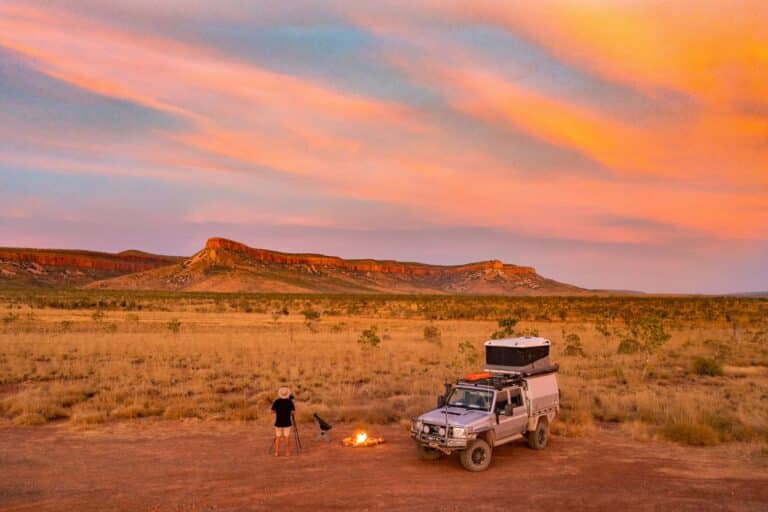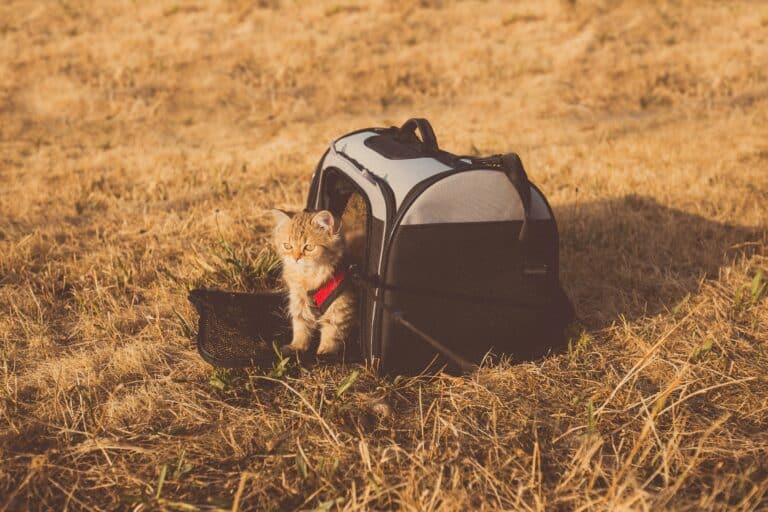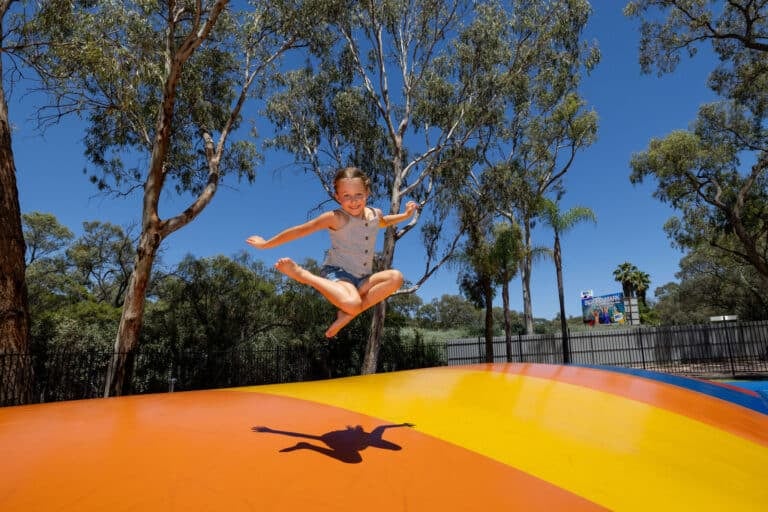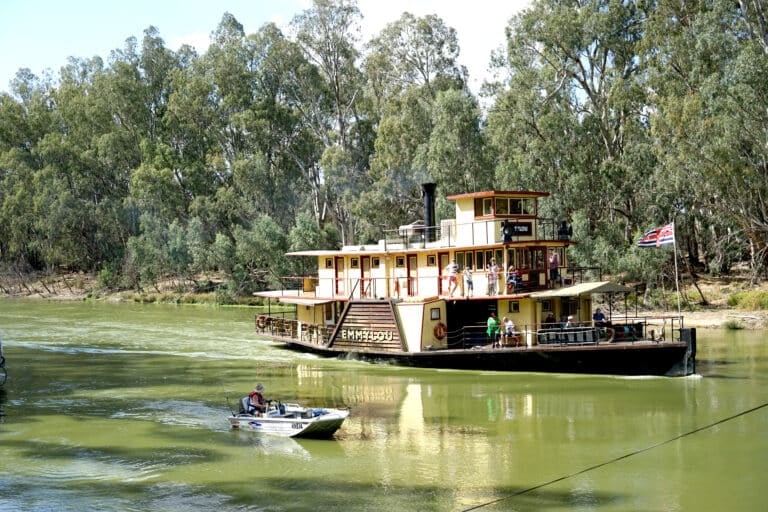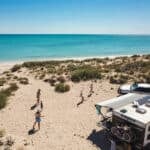Don’t be a casualty!
Words & images Colin Kerr
Did You Know?
Apart from a reduction in size and armour, crocodiles today are little different from their prehistoric relatives. It is only in the past 50 to 60 years however that the ageless crocodile has received any real threat to its existence with modern man hunting them for their hides – for shoes, handbags, hat bands, belts, key rings and even bookends.
In the 1950s, croc skin prices were astronomically high and Australia’s largest carnivorous animal was almost headed for extinction. Since 1972, crocodiles have been fully protected and their numbers continue to build up strongly. There is even a current call for the culling of crocs in ‘crocodile game hunting adventures’ (something like what happens with animals in Africa) as a potential tourist attraction.
A number of crocodile farms where they are bred for their hides (and more recently for their meat) have sprung up around Australia to satisfy emerging market needs. Large crocodiles can stay under water for at least an hour if they are not stressed. Their heart rate drops to 2-3 beats per minute, conserving energy. The temperature of the nest of the estuarine crocodile determines the sex of the young. Heat is generated by the decomposition of vegetation in the nest.
Australia is host to two different species of crocodile: The estuarine crocodile (Crocodylus porosus) and the Johnston River crocodile (freshwater crocodile – Crocodylus johnstoni). While both have quite a terrifying appearance it is only the estuarine crocodile (saltwater) that is dangerous to humans and these can often grow to five metres and more.
The freshwater croc is mostly found in freshwater streams or lagoons and occasionally in tidal, brackish waters. They usually grow to around 2.5 metres (male) and two metres (female) although slightly bigger ones have been recorded.
Their diet is mostly frogs, lizards, fish, spiders, birds and insects. Being very timid creatures they are generally not considered dangerous and have only been known to attack humans when cornered, aggravated or provoked – an encounter which can result in quite a nasty bite.
The freshwater crocodiles are easily recognised by their long, narrow snout and a row of four large scales at the base of their heads; while estuarine crocodiles have a short, very broad, snout.
Safety Tips
In the northern tropics, unless you know otherwise, assume that every waterway has in residence some dangerous estuarine crocodiles. They used to be known as saltwater crocs, but many have been found hundreds of kilometres upstream in lagoons, swamps or other brackish or completely fresh water – take care everywhere.
Always take heed of crocodile warning signs.
Stand at least three or four metres back from the water’s edge when fishing and remain alert. Crocodiles can move incredibly fast – so always have a clear escape route.
Don’t stand on logs or low rock ledges overhanging deep water. Crocs can jump clear of the water to take prey. Some tour boats have had crocodiles leaping their full length vertically straight out of the water to take food – so be warned.
Avoid going near the edge of deep murky water – just because you can’t see a crocodile, it doesn’t mean there aren’t any quite nearby… watching you.
During cooler months, crocodiles spend much of their day basking in the sun on river banks. You can often see their ‘slide’ marks beside the water. They are highly territorial creatures and you can therefore assume they won’t be far away.
Do not use canoes or kayaks in crocodile waters. These craft can resemble crocodiles when seen from under the water and, with their territorial instincts, crocs will attack other crocs that come into their territory. Keep arms and legs inside any boat when in crocodile habitat waters; and be especially wary near boat ramps.
During nesting season (October to April) female crocodiles (who lay an average of around 50 eggs) will fiercely protect their nests – which are usually on the banks above high water levels. Stay well away.
Crocodiles are most active at night as they hunt for prey; and they can go several weeks without eating. They are, however, opportunistic hunters – and despite the fact they might not be hungry, they will often still attack easy prey and store their catch under a river bank or in tree roots in the water… and come back later to feed.
Do not clean fish, discard frames or prepare food near the water’s edge; and don’t dispose of food scraps around river banks or camping areas. And definitely do not feed crocodiles.
Do not swim in crocodile habitat waters. If you must go into the water to cool off, do so in a group (never alone) and only in areas of very shallow rapids – well away from any deep water where you can’t clearly see the riverbed.
Set up your camp at least 50 to 100 metres away from the water; and even then, be careful. Camp well away from stock or animal watering places.
Keep your family dog well away from the water in croc territory, as dogs regularly fall victim to crocodile attacks.
If you need to collect water, choose a shallow spot. Quickly scoop up your water in a bucket and move well away… and don’t keep going back to the same spot time and time again. Crocodiles are cunning. They notice this routine, particularly when animals (out of habit) come back to the same place each day to drink. Crocodiles will often lay waiting ready to strike. In deep water, collect your water from the bank using a bucket with a rope attached, and then quickly move away.
While their main diet is fish, crabs, snakes and other water inhabitants, crocodiles will (when hungry) take quite large animals from on the shore – pigs, cattle, even horses have fallen victim to these giants with their vice-like grip and infamous crocodile death roll.
Clearly, crocodiles are not intentionally man-eaters. But a human can simply appear to them as another animal and any unfortunate human taking risks could represent a croc’s next meal.





